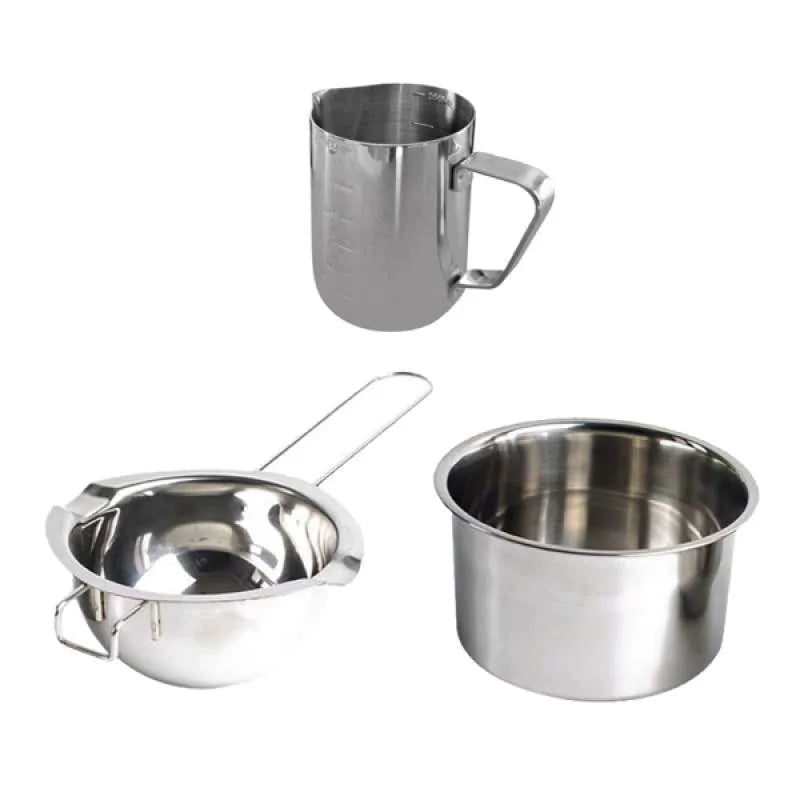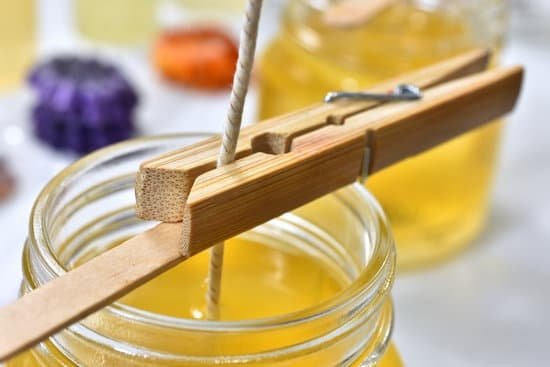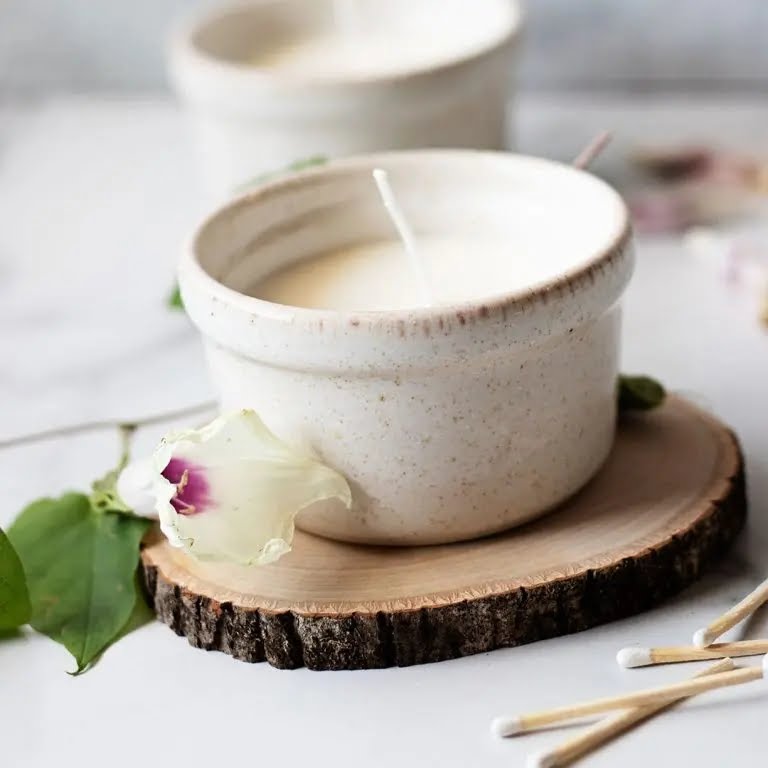Candle making is a popular hobby and craft that allows individuals to create their own unique and beautifully scented candles. One of the most crucial aspects of candle making is ensuring that the candle melts evenly, which not only affects its aesthetic appeal but also its overall performance. In this article, we will delve into the essential aspects of creating evenly melting candles, from understanding the science behind it to troubleshooting common issues.
Evenly melting candles are important for several reasons. Firstly, they ensure that all the wax is used up, preventing wastage and maximizing the burn time of the candle. Additionally, an even burn promotes a longer-lasting and more consistent fragrance throw, allowing you to fully enjoy the scent throughout the candle’s lifespan. Lastly, an even melt also provides a visually pleasing experience as it prevents tunneling or uneven wax pools on the surface of the candle.
To achieve consistently even melting candles, it is crucial to understand the science behind candle melting, choose the right wax and wick, pour and cool the candle properly, and avoid common pitfalls when adding fragrance and color. Throughout this article, we will explore each of these factors in detail and provide tips for troubleshooting any issues related to uneven melting.
Whether you are a beginner or experienced chandler (candle maker), mastering these techniques will elevate your candle making skills and enhance your overall candle burning experience.
Understanding the Science Behind Candle Melting
Candles have been used for centuries to provide light, warmth, and ambiance. However, not all candles melt evenly, which can affect their performance and longevity. Understanding the science behind candle melting is essential for creating high-quality, evenly melting candles.
One of the key factors in achieving even candle melting is choosing the right wax. Different waxes have different melting points and burn characteristics, so it’s important to select a wax that is known for its even melting properties. Some popular options include soy wax, beeswax, and paraffin wax. Each type of wax has its own unique attributes that can impact how evenly the candle burns.
Another important aspect of achieving even candle melting is selecting the ideal wick. The size and type of wick used in a candle can greatly influence how evenly it burns. A wick that is too small may result in uneven melting, while a wick that is too large can cause the candle to burn too hot and fast.
Proper pouring and cooling techniques also play a significant role in ensuring even candle melting. When pouring the melted wax into the container, it’s important to do so slowly and steadily to prevent air pockets from forming. Additionally, allowing the candle to cool at room temperature without any drafts will help prevent uneven cooling and potential cracking.
Ultimately, understanding the science behind candle melting is crucial for producing high-quality candles that burn evenly and provide long-lasting enjoyment for consumers.
- Choose a wax with known even melting properties such as soy wax or beeswax
- Select an appropriate wick size and type for your chosen wax
- Use proper pouring and cooling techniques to avoid air pockets and ensure even cooling
Choosing the Right Wax for Even Melting
When making candles, choosing the right wax is crucial to achieving even melting. The type of wax used can greatly impact how evenly a candle burns. One popular option for candle making is soy wax, which has a lower melting point and can help the candle burn evenly. Paraffin wax, on the other hand, has a higher melting point and may not distribute heat as evenly. Beeswax is another option that melts evenly and produces a clean burn.
Another consideration when choosing the right wax for even melting is the additives and chemicals present in the wax. Some waxes come pre-blended with additives designed to improve burning characteristics. It’s important to understand how these additives may impact the evenness of the candle melt. Many experienced candle makers prefer to use pure, natural waxes without additives for the most consistent results.
In addition to considering the type of wax and any additives present, it’s important to source high-quality materials for candle making. Choosing a reputable supplier for your wax can ensure that you are working with a consistent and reliable product, which is essential for achieving even melting in your candles.
| Wax Type | Even Melting Potential |
|---|---|
| Soy Wax | High |
| Paraffin Wax | Low |
| Beeswax | High |
Selecting the Ideal Wick for Even Burn
When it comes to creating evenly melting candles, choosing the right wick is crucial. The wick plays a significant role in how the candle burns, so selecting the ideal one is essential for achieving an even burn. Here are some tips for selecting the perfect wick for your candles:
- Consider the type of wax you are using: Different waxes require different types of wicks. For example, soy wax typically requires a different type of wick than paraffin wax. Be sure to choose a wick that is compatible with the specific wax you are using.
- Think about the diameter of your candle: The size of your candle will also impact the type of wick you should use. For larger candles, you will need a thicker and more robust wick to ensure that it burns evenly.
- Test different wicks: It’s essential to experiment with a few different wick options before settling on the ideal one. Conducting test burns with various wicks will help you determine which one provides the most even burn for your particular candle-making project.
By carefully considering these factors and experimenting with different options, you can select the ideal wick that will promote an even burn for your candles. Understanding how to choose the right wick is critical in ensuring that your candles melt consistently and effectively.
Once you have identified the suitable wick for your candles, you’ll be well on your way to producing high-quality candles that provide a uniform and consistent burn from start to finish. This attention to detail in selecting the ideal wick will ultimately result in candles that not only look beautiful but also offer an exceptional burning experience for those who enjoy them.
Proper Pouring and Cooling Techniques for Even Melting
When it comes to making candles that melt evenly, proper pouring and cooling techniques are crucial. Even melting candles not only look more aesthetically pleasing but also ensure that the fragrance is evenly distributed, resulting in a more enjoyable experience for the user. In this section, we will explore the best practices for pouring and cooling your homemade candles to achieve an even melt.
Choosing the Right Temperature and Pouring Technique
One of the key factors in ensuring even melting candles is using the right temperature when pouring the melted wax into the container. It’s important to follow the guidelines provided with your chosen wax type, as different waxes have different ideal pouring temperatures. Additionally, using a thermometer can help you monitor the temperature and avoid pouring the wax too hot or too cold, which can result in uneven melting.
Allowing Sufficient Cooling Time
After pouring the melted wax into the container, it’s important to allow sufficient time for it to cool and solidify. Rapid cooling can lead to uneven textures and potential cracks in the candle. As a general rule of thumb, most candles will require at least 24 hours to fully cool and set. However, larger or uniquely-shaped candles may require longer cooling times.
Avoiding Disturbance During Cooling
To achieve an even melt, it’s crucial to avoid disturbing the candle while it’s cooling. Movement or jostling of the candle during this critical phase can cause uneven surfaces or cracks in the wax. Once poured, place your candle containers on a level surface and resist any temptation to move them until they are completely cooled and solidified.
By mastering these proper pouring and cooling techniques for candle making, you can greatly increase your chances of producing evenly melting candles that provide an optimal sensory experience for you and your customers.
By mastering our proper pouring technique along with allowing sufficient time for solidifying without disturbance helps makers create beautifully crafted candles that offer a consistent burn from start to finish.
Adding Fragrance and Color Without Affecting Even Melting
When creating candles, adding fragrance and color can enhance the aesthetic appeal and ambiance of the final product. However, it is important to do so without compromising the even melting properties of the candle. Here are some tips for adding fragrance and color without affecting the even melting of your candles.
Use High-Quality Fragrance Oils
When adding fragrance to your candles, it is essential to use high-quality fragrance oils specifically designed for candle making. Avoid using essential oils or other types of fragrances that may contain impurities or additives that could affect the burning characteristics of the candle. Be sure to carefully measure the amount of fragrance oil used according to the recommended guidelines for your specific wax type and candle size.
Choose Dyes Specifically Made for Candle Making
Just like with fragrance oils, it is important to use dyes that are specifically formulated for use in candles. These dyes are designed not to interfere with the burning properties of the wax, ensuring that the candle melts evenly while still achieving vibrant and consistent color throughout. Follow the recommended usage rates provided by the dye manufacturer to avoid over-saturating the wax, which could lead to uneven melting.
Properly Incorporate Fragrance and Color Into Wax
To ensure that fragrance and color are evenly distributed throughout the wax, it is crucial to incorporate them thoroughly during the pouring process. Follow proper mixing techniques recommended for your specific wax type to achieve a uniform distribution of fragrance and color without disrupting the composition of the wax. This will help maintain an even burn as the candle melts down, allowing you to enjoy both beautiful scent and color without sacrificing quality burn time.
By following these guidelines for adding fragrance and color to your candles, you can create beautifully scented and colored products that still maintain their ability to melt evenly. Balancing aesthetics with functionality is key in achieving high-quality candles that provide both visual appeal and optimal performance when lit.
Tips for Consistently Even Melting Candles
Consistently achieving evenly melting candles is essential for a satisfying and safe candle-burning experience. To ensure that your candles burn smoothly and evenly, there are several tips and techniques that you can follow during the candle-making process. By carefully selecting the right materials and following proper procedures, you can create high-quality candles that provide a consistent and even melt from start to finish.
One of the most important factors in achieving consistently even melting candles is to use the correct type of wax. Look for waxes specifically designed for container candles, as these are formulated to provide a uniform melt pool as the candle burns. Soy wax, coconut wax, and paraffin wax blends are popular choices known for their excellent burning characteristics. Be sure to avoid using taper or pillar candle waxes for container candles, as these may not melt evenly.
In addition to choosing the right wax, selecting the appropriate wick is crucial for achieving even melting in your candles. The size and type of wick you use will directly impact how the candle burns. A wick that is too small may lead to tunneling, while a wick that is too large can cause uneven burning or sooting.
Experiment with different wick sizes and materials in combination with your chosen wax to determine the best option for creating a consistent melt pool. Understanding how various wicks perform with specific waxes will help you achieve optimal burning results without sacrificing quality or safety.
Troubleshooting Common Issues With Uneven Candle Melting
One of the most common issues with uneven candle melting is the formation of a “memory ring” or “tunneling” in the candle, where the wax melts only in the center, leaving a thick ring of unmelted wax around the edges. This can happen if the candle is not burned for a long enough period during its initial use.
To troubleshoot this issue, you can use a long-reach lighter to ensure that the entire surface of the candle is melted each time it is burned, or carefully pour off excess wax before relighting.
Another common problem with uneven melting candles is flickering or smoking, which can occur if there is a draft in the room or if the wick is too long. To troubleshoot this issue, ensure that your candles are placed away from open windows and doors, and always trim your wick to about 1/4 inch before lighting to prevent excessive smoke and soot.
In some cases, uneven melting may be caused by using a wick that is too small for the diameter of the candle. If you notice that your candle is burning down in a tunnel shape rather than evenly across the top, try using a larger wick size for your next batch of candles to see if this resolves the issue.
| Common Issue | Troubleshooting Solution |
|---|---|
| Memory ring/tunneling | Ensure entire surface melts when burning; pour off excess wax |
| Flickering/smoking | Avoid drafts; trim wick before lighting |
| Uneven burn shape |
Conclusion
In conclusion, understanding the importance of evenly melting candles is crucial for achieving the best results in candle making. By comprehending the science behind candle melting and following the proper techniques, you can create high-quality candles that burn evenly and provide a consistent fragrance release. Choosing the right wax, selecting the ideal wick, and employing proper pouring and cooling techniques are essential steps in achieving even melting candles.
By mastering these techniques, you can enjoy the benefits of evenly melting candles, such as longer burn times, more efficient use of wax and fragrance oils, as well as a more aesthetically pleasing appearance. Consistently even melting candles also provide a better sensory experience for relaxation or ambiance, without the frustration of dealing with common issues like tunneling or uneven wax pools.
As you continue your journey in candle making, remember that practice makes perfect. With patience and dedication to honing your craft, you can produce beautiful candles that not only look stunning but also burn consistently from start to finish. By following the tips provided and troubleshooting any issues that arise along the way, you can ultimately enjoy the satisfaction of creating high-quality, evenly melting candles for yourself and others to enjoy.
Frequently Asked Questions
Why Is My Homemade Candle Not Burning Evenly?
Your homemade candle may not be burning evenly due to several factors. One common reason is that the wick may be too small, causing the candle to tunnel and leaving excess wax around the edges.
Another reason could be that the room is too drafty, causing uneven burning. To ensure a more even burn, try using a larger wick size or keeping the candle away from drafts.
How Do You Get All Candle Wax to Melt?
Getting all candle wax to melt can be achieved by ensuring that you allow enough time for the candle to burn until the wax pool reaches the edge of the container. This process may take several hours, so it’s important to have patience.
Additionally, trimming the wick before each use can help prevent tunneling and ensure that all the wax melts evenly.
Why Are My Candles Tunneling After Pouring?
If your candles are tunneling after pouring, it could be due to using a wick that is too small for the diameter of the candle container. This causes the wax to melt in a narrow tunnel down the center, leaving excess wax along the sides untouched.
To avoid tunneling, choose a wick size appropriate for your candle diameter or consider using multiple wicks evenly spaced across the surface of the candle.

Welcome to my candle making blog! In this blog, I will be sharing my tips and tricks for making candles. I will also be sharing some of my favorite recipes.





